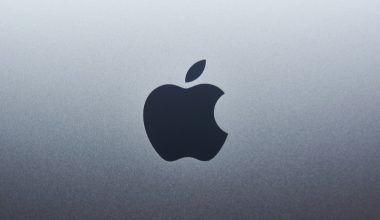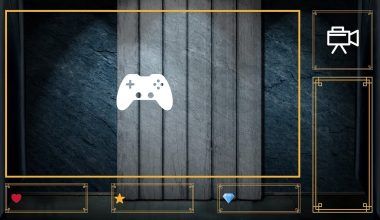Have you ever heard a name that sounded too intriguing to be real? Maybe it was on an album cover, a painting, or even a book. Chances are, you stumbled upon a fake artist name. These aliases hold a unique charm, blending creativity with mystery. But why do artists adopt fake names, and how do these pseudonyms shape their craft? Let’s explore the captivating story behind fake artist names and why they’re more common than you might think.
Why Do Artists Use Fake Names?
Artists choose fake names for countless reasons, and each one tells its own story. For some, it’s a way to reinvent themselves. Imagine starting fresh with a name that holds no preconceived notions or history. Others use pseudonyms to separate their personal lives from their art. This can be especially important in a world where privacy is becoming increasingly rare. Fake names also give artists the freedom to experiment without fear of judgment. For instance, a musician might try a completely different genre under a new alias. Doesn’t that sound liberating?
The Role of Anonymity in Creativity
Think about the pressure that comes with putting your real name on something. For many artists, this can be a roadblock. By using a fake name, they can shed that weight and let their creativity flow freely. Anonymity removes the fear of failure and criticism, allowing artists to take bold risks. Did you know that some of the most famous works in history were created under pseudonyms? It’s true! An alias can be like a mask, giving the artist the courage to explore uncharted territories.
Famous Examples of Fake Artist Names
You might be surprised to learn how many iconic artists have used fake names. Take Banksy, for example. This mysterious street artist has captivated the world, but no one knows their real identity. Then there’s Mark Twain, the pen name of Samuel Clemens. Twain’s humor and wit might have felt different if published under his birth name. Even music isn’t immune to pseudonyms. Have you heard of David Bowie? Before becoming Bowie, he was known as David Jones. The change allowed him to avoid confusion with another artist and craft his legendary persona.
How Fake Names Influence Public Perception
Names carry power. They shape how we perceive a person and their work. A fake name can create intrigue, making the artist and their creations feel more compelling. Think about it: would you be as curious about Banksy’s graffiti if you knew their real name and backstory? Probably not. Fake names add an element of mystery, pulling us deeper into the art.
The Fine Line Between Branding and Authenticity
Using a fake name can be a double-edged sword. On one hand, it’s an excellent branding tool. A unique pseudonym can make an artist unforgettable. On the other hand, some might argue it’s less authentic. But is that really true? Isn’t art about expression, no matter what name it’s under? Many artists feel their pseudonyms represent their truest selves, even more than their real names do.
Pseudonyms in Modern Times
In today’s digital age, fake artist names are more relevant than ever. Social media has made it easy for anyone to create and share art, but it’s also made it harder to stand out. A catchy pseudonym can make all the difference. Plus, it offers a layer of protection from the constant scrutiny of online audiences. This is why so many new artists choose to adopt a fake name when starting their journey.
The Process of Choosing a Fake Name
Coming up with a fake name is an art in itself. Some artists spend weeks or even months finding the perfect alias. Others stumble upon it by accident. The best pseudonyms often have a personal connection or a story behind them. For example, Lady Gaga’s name was inspired by the Queen song “Radio Ga Ga.” The name felt larger than life, just like her music.
Challenges of Using Fake Names
While fake names offer many benefits, they’re not without challenges. One common issue is maintaining consistency. If an artist uses multiple pseudonyms, it can confuse their audience. Another challenge is legal recognition. Imagine trying to sign a contract with a name that doesn’t exist on your ID. Despite these hurdles, many artists find the benefits outweigh the drawbacks.
Fake Names in Collaborative Projects
Interestingly, fake names are often used in collaborations. This allows artists to explore new partnerships without affecting their main brand. For instance, electronic music producer Deadmau5 has collaborated under different aliases to experiment with unique sounds. This strategy keeps their primary identity intact while exploring new creative avenues.
The Cultural Impact of Pseudonyms
Fake artist names aren’t just a personal choice; they can influence entire cultures. Names like Banksy or Daft Punk have become symbols of creativity and rebellion. They’ve inspired countless fans to embrace their individuality and think outside the box. It’s incredible how something as simple as a name can leave such a lasting legacy.
The Future of Fake Artist Names
As art and technology continue to evolve, fake artist names are here to stay. They’ll likely become even more diverse and creative, reflecting the changing times. Who knows? The next big movement in art might be led by someone using a pseudonym. And isn’t that exciting to think about?
In conclusion, fake artist names are much more than just clever aliases. They’re tools of reinvention, shields of privacy, and keys to unlocking boundless creativity. Whether you’re an artist yourself or simply a fan, understanding the power of fake names adds a new layer of appreciation to the art you love.
For further reading, explore these related articles:
- The Story of Kesha: A Journey of Music, Strength, and Inspiration
- Exploring the World’s Smallest Speaker: Tiny but Powerful!
For additional resources on music marketing and distribution, visit Deliver My Tune.






